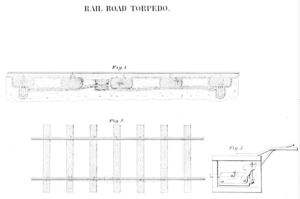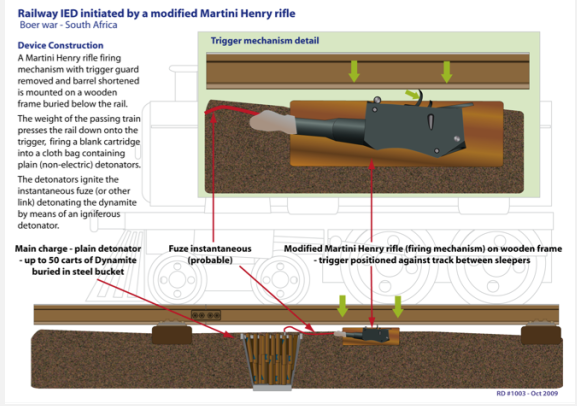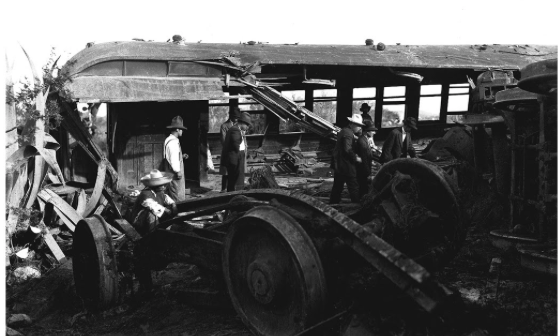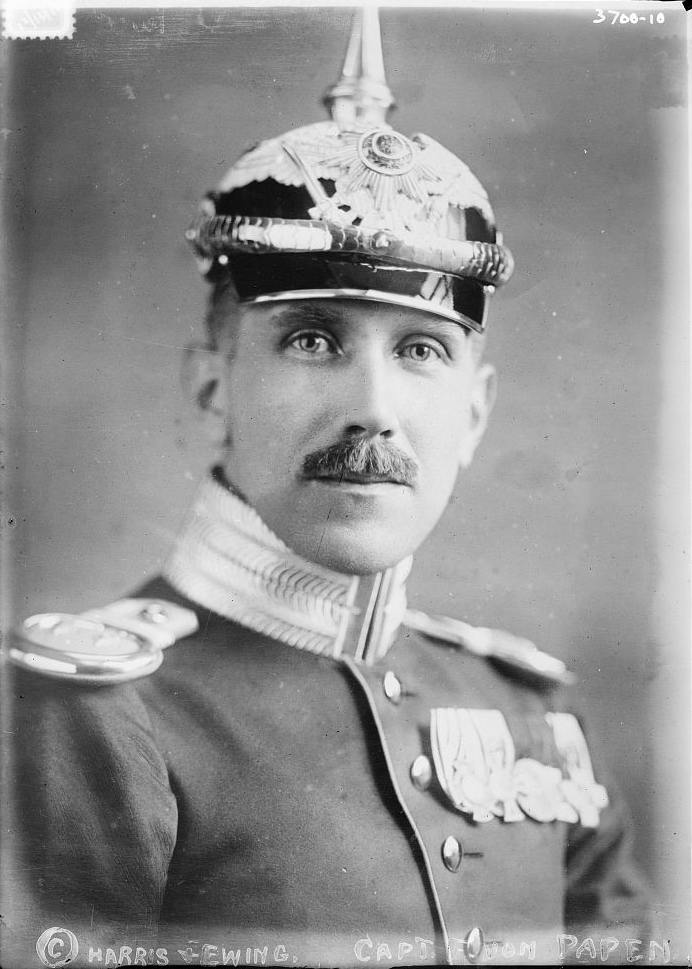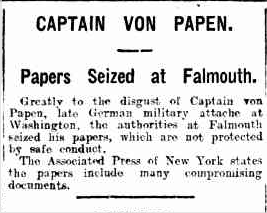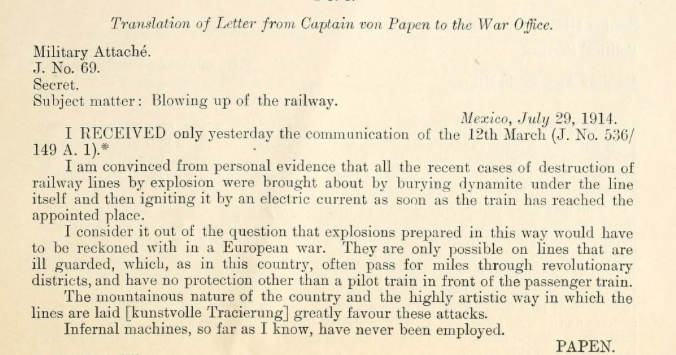There’s a lot of talk about the suffragette movement right now, and that’s entirely appropriate. But there is little about the suffragette bombing and arson campaign. On these pages I try to avoid political commentary, but just for the record here’s an outline of some of the bomb attacks by the Suffragette movement. There were also a considerable number of arson attacks. This is by no means an exhaustive list of bombing attempts but I think it’s most of them. I have commented on device construction of some of the incidents, where known.
- 18 July 1912. Theatre Royal Dublin. several small explosive devices exploded during an attack by suffragettes who tried to burn down the theatre.
- 19 February 1913. Walton on the Hill, Surrey. A house being built for Lloyd George was attacked with two crude explosive devices. Only one functioned, disrupting the second. The unexploded device had a main charge of 5lbs of gunpowder.
- 4 April 1913. Oxted railway station, Surrey. Bomb exploded in men’s lavatory. Clockwork mechanism and battery recovered.
- 14 April 1913. Bank of England, London. Milk can attached to railings by hat pins in the street outside the Bank of England, opposite the entrance top the Stock Exchange. Relatively large charge. Timing device of a wristwatch and battery, device initiated but did not explode properly, device spotted emitting smoke, policeman carried the burning device to the Royal Exchange and immersed it in a fountain.
- 17 April 1913. Aberdeen Railway Station. Gunpowder charge, fuse was a lit candle. A railway porter extinguished the candle.
- 24 April 1913. Free Trade Hall, Manchester. Bomb exploded.
- 24 April 1913. Crown Court, Newcastle. Bomb exploded. 2ft long pipe bomb.
- 2 May 1913. Piccadilly Tube station. London. A quantity of nitroglycerine was found abandoned at the station.
- 5 May 1913. Borough Market Post office, London. Gunpowder and nitroglycerine recovered from a parcel.
- 7 May 1913. St Paul’s Cathedral, London. Ticking bomb discovered and defused. the device contained a clock, two batteries, and contained nitro-glycerine as the main charge. Nitroglycerine was a relatively rare explosive used by the Suffragettes.
- 10th May 1913. Cambridge. a bomb exploded in the changing rooms of the Cambridge University football ground.
- 10 May 1913. Lime St station, Liverpool. A device failed to function in the waiting room. Burning fuse had gone out. The device was packed with improvised shrapnel (nuts and bolts).
- 10 May 1913. Empire Theatre, Dublin. A woman discovered a bomb made from 24 cartridges of gunpowder, with the fuse burning i the ladies lavatory in the theatre. She picked up the device and plunged it into water in a sink, extinguishing the fuse.
- 10 May 1913. Reading Post Office. A parcel was found ticking and a postal device connected to a timer was recovered. The explosive charge consisted of gunpowder and nitroglycerine.
- 14 May 1913. Parcel bomb sent to Sir Henry Curtis-Bennett, a magistrate, at Bow Street court, London. Device consisted of a tin of gunpowder, and a bullet with a nail fixed to strike the percussion cap, presumably released on a spring when the package was opened (but not that clear). Device defused. A few days later two persons attempted to push Sir Henry off a cliff near Margate as he was out walking.
- 15 May 1913. A small bomb planted outside the National Gallery, London. Failed to explode.
- 16 May 1913. a series of bombs at
- A library in South London
- A church in Hastings
- An hotel in Brentwood
- At Westbourne Park Station (device failed)
- 21 May 1913. Royal Observatory, Blackford Hills Edinburgh. Bomb exploded.
- 27 May 1913. Reading station. A bomb was thrown onto the platform from a passing train (the Bristol Express), where it exploded.
- 11 June 1913. Post Office, Newcastle upon Tyne. Bomb exploded.
- 15 June 1913. Eden Park railway station, Beckenham. Bomb recovered. A clockwork timer had failed to function.
- 17 June 1913. Blackfriars Bridge. Bomb thrown from the bridge, exploded on or under the water.
- 18 June 1913. Stratford Upon Avon Canal, Birmingham. Large explosion damaged the canal. Remains of a long burning fuse recovered.
- 5 July 1913. Cotton Exchange, Liverpool. Bomb exploded.
- 7 July 1913. Monsall Road railway siding. Manchester. Device exploded on a train carriage parked in the sidings.
- 19 July 1913. Haslemere station. A bomb was discovered in a box on some steps leading to the platform. It was plunged into a pail of water bya porter. a clock, battery, “fuse” and explosives were recovered.
- 11 November 1913. Alexandra Park, Manchester. A large explosion of a pipe bomb, probably gunpowder. Initiation system not known
- 14 November 1913. Sefton Park palm House Liverpool. Bomb failed to explode.
- 18 December 1913. Holloway prison, London. Two large dynamite bombs below up next to the prison garden wall. The devices had been exploded by two 50ft loing burning fuses run to a nearby House.
- 6 January 1914. Crown Point, Leeds. A bomb exploded at an electricity generating station.
- 7 January 1914. Harewod Barracks, Leeds. A dynamite bomb was thrown over the wall of the barracks which was being used by the police at the time. It exploded.
- 24 January 1914. Kibble Palace botanic gardens, Glasgow. Two devices were encountered in the Botanic gardens. One was rendered safe by a gardener who cut a burning fuse with his knife. The other exploded.
- March 1914. Church of St John the Evangelist, Smith Square, Westminster, London. Bomb exploded. (see second attack on this church on 12 July 1914)
- 3 April 1914. Belmont Church, Glasgow. Three small devices exploded in Belmont Church, Glasgow
- 5 April 1914. Trafalgar Square, London a bomb exploded at the church of St Martin-In-the Fields, starting a fire.
- 17 April 1914. Britannia Pier, Yarmouth. Bomb exploded causing a fire which destroyed the Pier. On the same day a number of fires were started around the country.
- 3 May 1914. Upper Windledon Reservoir, Yorkshire. Large iron pipe bomb discovered at valve house, having failed to explode. Fuse was a wax taper.
- 10 May 1914. Metropolitan Tabernacle, Elephant and Castle, London. A bomb exploded in the gallery of the church.
- 22 May 1914. Glasgow. Two large explosive devices discovered buried beside a Glasgow aqueduct. Fuses had been lit but had extinguished.
- 5 June 1914. Dudhope Castle, Dundee Policeman discovered a pipe bomb at the castle entrance. Burning fuse was wrapped around a candle, which had been lit but had gone out.
- 11 June 1914. Westminster Abbey, London. a bomb exploded beside the coronation chair, probably damaging the Stone of Scone. which is built into the chair. Iron shrapnel and been built into the bomb.
- 14 June 1914. St George’s Church Hannover Square, London. Bomb exploded.
- 15 June 1915. Olympia, London. A suffragette was arrested in possession of a bomb at a horse show.
- 8 July 1914. Robert Burns’s cottage , Scotland. Two people were spotted placing large explosive devices against the wall of the cottage, an historic building. One person was detained, the other escaped. two devices were recovered, each containing about 4kg of blasting powder, each with a 20ft burning fuze.
- 12 July 1914. A postal bomb exploded while in transit on a train between Blackpool and Manchester causing a fire. A guard was severely injured in the flames
- 12 July 1914. device left under a pew in the Church of St John the Evangelist, Smith Square, Westminster, London during a service. Perpetrator Annie Bell arrested as she left, having been under surveillance. device consisted of a large charge of 5.5 lbs of gunpowder with a lit candle inserted. Device was extinguished by the congregation.
- 13 July 1914. Rosslyn chapel, Edinburgh. Bomb consisted a a tin of gunpowder and a long burning fuse, was set on a window ledge and exploded.
- 1 August 1914. Lisburn, Northern Ireland. Bomb exploded outside Christ Church Cathedral, leaving a crater 4 feet deep
Churches targeted: 11
Railway targets: 10 (including a postal device that functiond on a train)
Devices defused by passers by/first responders: 10
Devices failed to function as intended: 10

